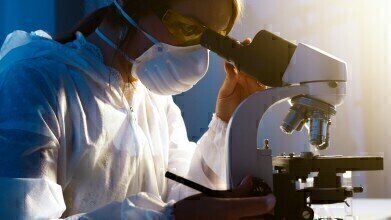News & Views
What are Designer Chromosomes?
Aug 15 2014
A designer chromosome is a chromosome that has been synthetically created from scratch by scientists, and offers the opportunities to enhance desirable facets whilst eliminating undesirable ones.
In the past, scientists have successfully recreated chromosomes for bacteria and viruses, which are known as prokaryotic cells and contain basically a jumble of DNA inside their cells. However, eukaryotic cells have a far more complex makeup, consisting of a nucleus and a carefully arranged chromosome structure. It is these cells which go into the constitution of plants, animals and humans. And earlier this year, scientists led by Dr. Jef Boeke from New York’s Institute for Systems Genetics were able to successfully synthesise the first eukaryotic string of designer chromosomes.
After a process which took 7 years and resulted in 50,000 alterations to the DNA, scientists isolated one of the 16 chromosomes present in yeast and amended all 273,871 base-pairs of the structure. Among other things, they removed “junk DNA”, which is unable to code for proteins and “jumping DNA”, which often triggers mutations with its erratic nature. They also culled thousands of base-pairs which were deemed surplus to requirements and had no bearing on the productivity of the yeast. They then implanted the elaborate reconstruction back into the original string of 16 chromosomes in a brewery … and found the chromosomes worked perfectly fine.
Now that they have successfully manipulated one of the chromosomes, Dr. Boeke and his team are fully focused on tackling the remaining 15. It is the most-radically altered chromosome constructed to date, and the fact that it remains functional is a truly remarkable breakthrough. The implications this could have on the future of genetic engineering are far-reaching and very exciting.
Possible Applications
Such manipulation of chromosomes has already been widely used in application such as the manufacture of biofuels, vaccinations for diseases such as Hepatitis B and medication for combating malaria. Indeed, recently the go-ahead was given for revolutionary stem-cell treatment trials for cancer, which employs the use of chromosome modification. For further information on such experimental treatment, please read the article: Approval Received for Clinical Trial with Genetically Modified Adult Mesenchymal Stem Cells for Cancer Treatment.
Furthermore, the latest developments could spell big things for the future of plant, animal and even human genetic modification. Since yeast has around 6,000 genes, and roughly one third of these are shared with humans, it is not unreasonable to think that at some point in the future similar techniques could be applied to human DNA. Indeed, in the high-pressure and lucrative world of competitive sports, the question of genetic enhancement of performance is an issue that has been on the radar of experts in the field for a few years now. To read more, please read this fascinating article: How Far Off is the First Genetically Modified Athlete?
Digital Edition
Lab Asia 31.2 April 2024
April 2024
In This Edition Chromatography Articles - Approaches to troubleshooting an SPE method for the analysis of oligonucleotides (pt i) - High-precision liquid flow processes demand full fluidic c...
View all digital editions
Events
Apr 28 2024 Montreal, Quebec, Canada
May 05 2024 Seville, Spain
InformEx Zone at CPhl North America
May 07 2024 Pennsylvania, PA, USA
May 14 2024 Oklahoma City, OK, USA
May 15 2024 Birmingham, UK


















